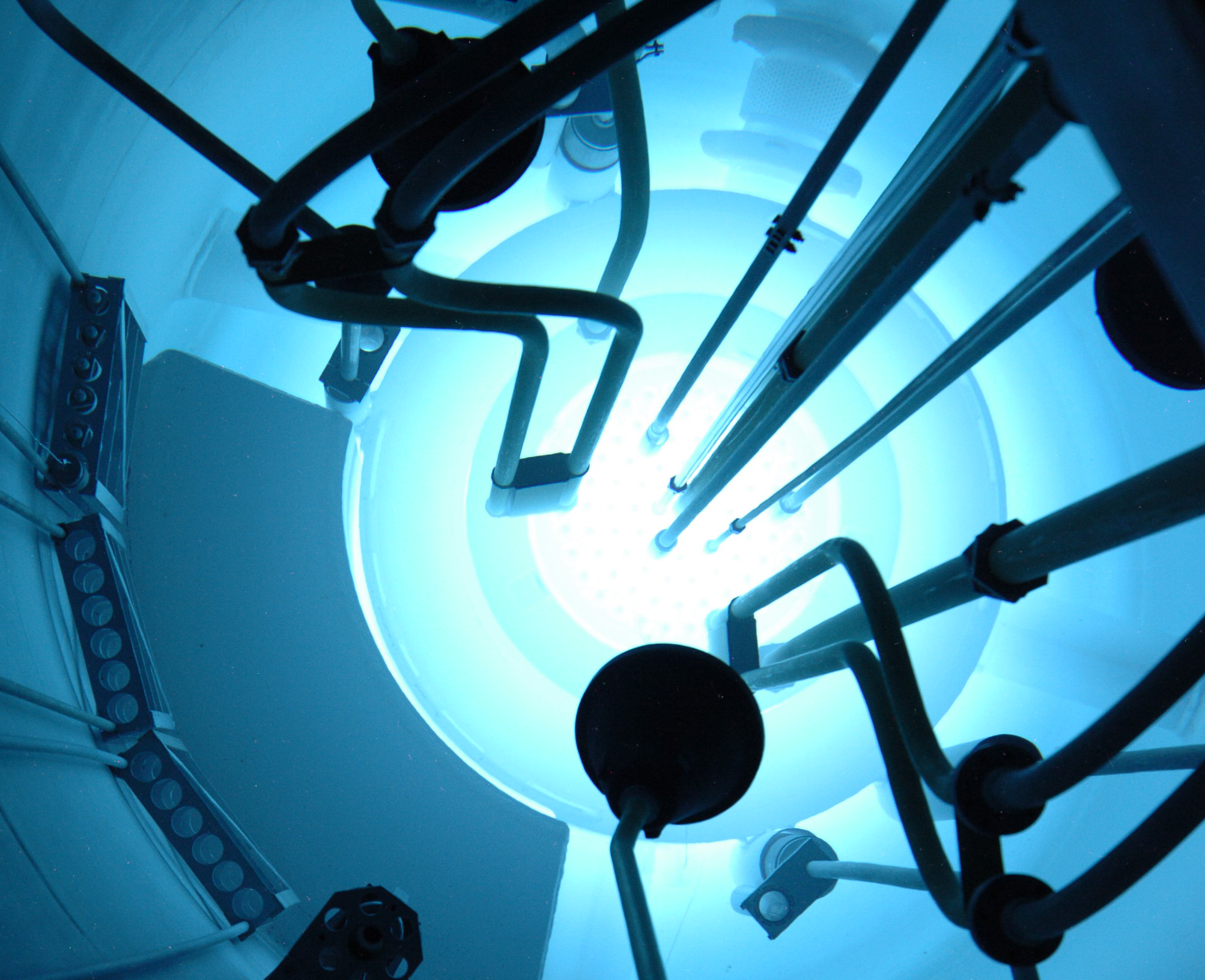
Ultracold neutrons
Normally neutrons are bound as neutral particles in atomic nuclei. In an unbound state they can be divided into categories according to their kinetic energy (relativistic, fast, cold etc.). In almost all energy classes free neutrons are transmitted by every material. Nevertheless if they are cooled down at some point the de-Broglie wavelength is on the same order as the lattice constants of many materials. Then the neutrons do not interact with single nuclei but with ensembles which can be interpreted as a potential barrier and on which the neutrons are reflected. This property can be used for the storage and examination of free neutrons - they are then called ultracold. Suitable materials are in this case stainless steel, fused silica or aluminum. The storable neutron energies are then some 10 to 100 neV, which corresponds to velocities up to 8 m/s.
Production of ultracold neutrons
At the TRIGA Reactor in Mainz the fast neutrons from nuclear fission are decelerated to thermal energies. Two sides of the reactor are usable as ucn source if hydrogen and deuterium are freezed to the end of the source tubes. The hydrogen crystal is a pre-moderator where the neutrons lose kinetic energy by excitation of a phonon. The adjacent deuterium layer has the same effect, however the capture cross section is rather small since deuterium atoms contain already one neutron. In total the fast neutrons are decelerated to energies in the 100 neV region so that they totally reflect on some materials and are therefore ultracold.
